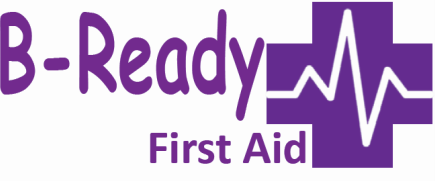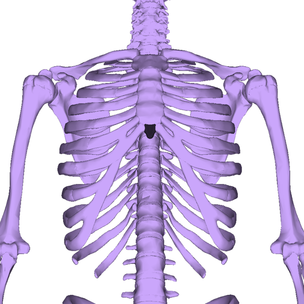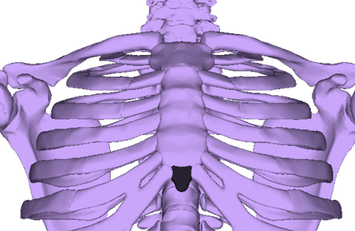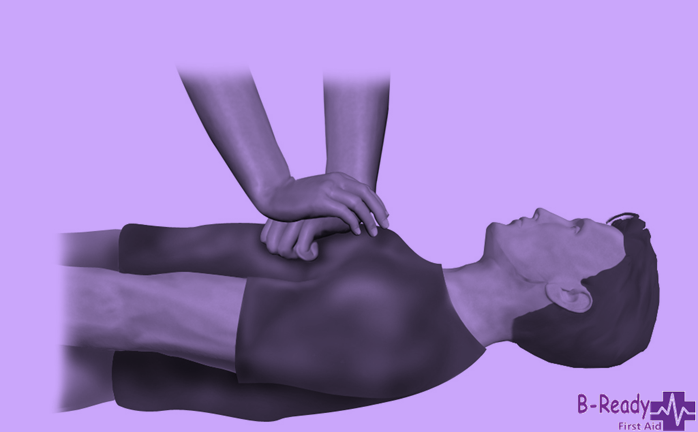|
This is a small cartilaginous extension of the lower part of the sternum or breastbone, just below where the ribs meet at the bottom tip. It is the smallest & lowest part of the sternum. At birth it is a thin and roughly a triangular shape which hardens in adult hood and fuses to the sternum, approximately between 15 and 29 years of age. It even flexes if you press it gently. It is a vital attachment point for several major muscles such as the diaphragm. In teaching CPR, we direct students to find the ribs, work your fingers up to where they meet, place a finger there and then place the heal of the hand above the finger position, towards the casualty's head. You can see just how close to the Xiphoid process that is. Much care should be given not to apply pressure as it is unsupported and can be injured, fractured, dislocate or even break away causing damage to various organs. This could puncture or lacerate the diaphragm or the liver, which as you can imagine is not helpful to a person who also requires CPR. Do take care but remember, ANY ATTEMPT IS BETTER THAN NONE!
0 Comments
Your comment will be posted after it is approved.
Leave a Reply. |
AuthorI'm all about educating those who have completed a First Aid Course & those that haven't....... You can B-The one to make a difference so B-Ready! Archives
February 2018
Categories |
We Would Love to Have You train with us!
HoursOffice hours
M-Th: 9am - 5pm F: 9am-4pm |
Telephone |
|





 RSS Feed
RSS Feed


